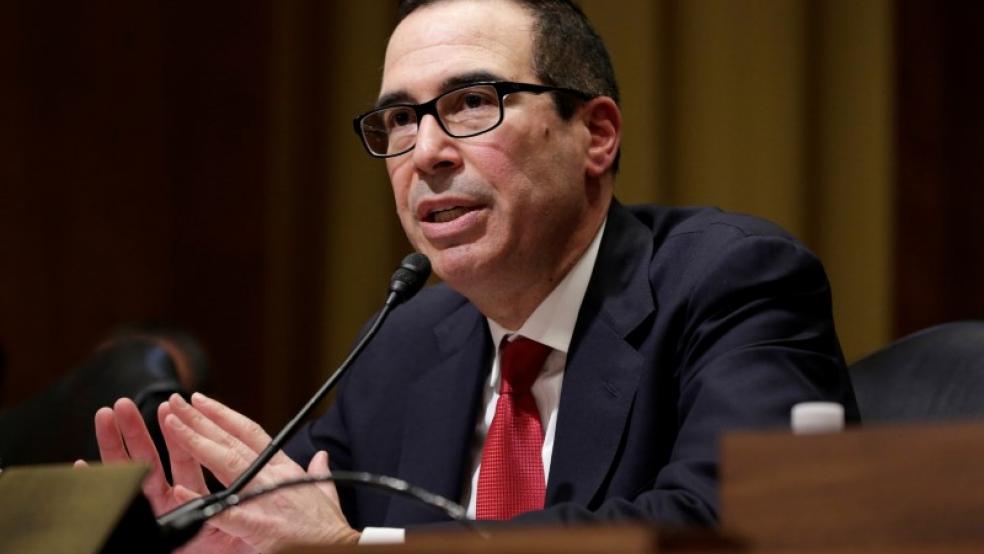Republicans profess to believe in state’s rights. In their view, states ought to use their laboratories of democracy to experiment on policy with limited federal interference. Except for national security and defense, Washington should get out of the way of Albany and Madison and Denver and Santa Fe.
But now that Republicans have taken over all levers of federal power, this principle of non-intervention in state affairs no longer applies when a state wants to do something GOP leaders don’t like. In fact, congressional Republicans are moving to stop California from a potential solution to one of the biggest challenges of the century: the retirement crisis.
Related: The Government Is Holding Millions in Unclaimed Retirement Money
Golden State lawmakers asked a simple question: How can we stop the epidemic of people entering retirement with no savings, forced to live off meager Social Security benefits? While Social Security was never intended to be the only leg of the retirement stool, that’s become the reality for far too many. According to a 2015 Government Accountability Office report, nearly one-third of all Americans have no retirement savings or pension. And one reason for that is the lack of retirement savings choices on the job.
Around 55 percent of California workers do not have access to a workplace retirement plan. Combine that with the median U.S. household holding an astonishingly low $2,500 saved for retirement, and it’s a recipe for poverty in old age.
So the California state legislature passed a plan called Secure Choice. Anyone without a choice of a 401(k) or other workplace retirement plan, roughly 7.5 million Californians, would have 3 percent of their earnings automatically deposited in an account similar to an Individual Retirement Account. This could, over time, max out to 10 percent, though workers could dial down that percentage or even opt out entirely. A state board would manage the fund, placing the money first in safe investments like Treasury bonds, and later in a diversified portfolio.
Related: 8 Things You Need to Do to Get Ready for Retirement
The accounts would be portable to any job, have low costs (capped at 1 percent) and relatively low risk and give workers the chance to see savings grow over time. Eight states in all have passed laws to enact similar retirement plans, and nearly two dozen more are considering the idea. But the participation of the nation’s largest state creates forward momentum to ensuring that everyone has access to a retirement savings plan.
Under the current timeline, large businesses would start implementing Secure Choice in 2018, with smaller businesses given more time. About 1.6 million Californians would become eligible in the first year. But Republicans could derail the effort.
Last August, the Department of Labor issued a final rule clarifying how these state savings plans would interact with the Employee Retirement Income Security Act of 1974, or ERISA. Under current law, any retirement plan established by an employer with an auto-enrollment feature becomes an ERISA employee-benefit plan.
Related: Retirement Incomes Falling Short in All but 3 States
ERISA pre-empts all state laws related to employee benefit plans. That could make Secure Choice and other state initiatives subject to lawsuits from employers who don’t want to administer them, or investment advisors who want to block competition. It would also increase disclosure and reporting requirements for employers who would just be conduits for the state plans, by deducting money from employee payroll.
To ameliorate this, the Labor Department clarified that auto-enrolled plans like California Secure Choice would not count under ERISA. But the rule didn’t get finalized until August 2016, putting it within the window for Republicans to overturn it under a previously obscure law known as the Congressional Review Act. Between now and May, Congress can pass a resolution of disapproval rolling back any Obama-era rules finalized after June 2016. If President Trump signs the resolution, the rule gets rescinded, and no future rule that’s “substantially similar” could be passed without Congress’ express consent.
Crucially, these resolutions are not subject to the filibuster. So with a simple majority in the House and Senate, Republicans can blow out dozens of individual Obama-era rules. For the next several months, this will be the main deregulatory effort in Congress.
Related: States Face a $1 Trillion Pension Problem — Here Are the Worst 10
Last week, two House Republicans introduced resolutions to rescind the Department of Labor rules for state and municipal retirement plans. That puts the future of Secure Choice and any similar program in jeopardy.
Why would Republicans care whether California wants to offer this for its workers? The programs are self-sustaining and put no taxpayer dollars at risk, merely expanding access to retirement plans. While Republicans claim that exempting state plans from ERISA means workers lose critical consumer protections, the spectacle of the same gang that wants to cripple the Consumer Financial Protection Bureau suddenly concerned about rip-offs makes no sense. And the Republican position also contradicts that principle of limited government and state’s rights. So what’s up?
Part of it is pure ideology. “Our nation faces difficult retirement challenges, but more government isn’t the solution,” said Rep. Tim Walberg (R-MI), who co-authored the new resolution. He’d rather small businesses partner to offer retirement plans to employees, something that simply hasn’t happened previously.
Related: A Big Reason Workers Aren’t Saving More for Retirement
But Walberg lets his slip show. A state-run program offers superior portability, while employer-based programs cannot be moved from job to job. What typically happens is that an investment advisor comes in to roll over workplace plans from a former employer into IRAs. And the advisory industry doesn’t want to lose that lucrative opportunity to rack up fees on savers. Indeed, the Investment Company Institute, an industry trade group, was the main opponent of California Secure Choice.
As journalist David Sirota points out, investment and insurance interests have given $515,000 to Walberg for his campaigns over the years, and a similar figure to co-author Francis Rooney (R-FL), himself a former investment company CEO.
California Senate President Pro Tem Kevin de León, the architect of Secure Choice, is trying to figure out how to save the program, even if Republicans kill the Labor Department regulations. De León could argue in court that the auto-enroll plans comply with the spirit of ERISA anyway. He may even use a statewide ballot measure to put Secure Choice on stronger legal footing.
Regardless, Republicans acting on behalf of their donors want to inject significant uncertainty into the process, and stymie state initiatives that could help people save for retirement. It shows that state prerogatives when the federal government refuses to act matter less than ideological purity and investment company profits.






